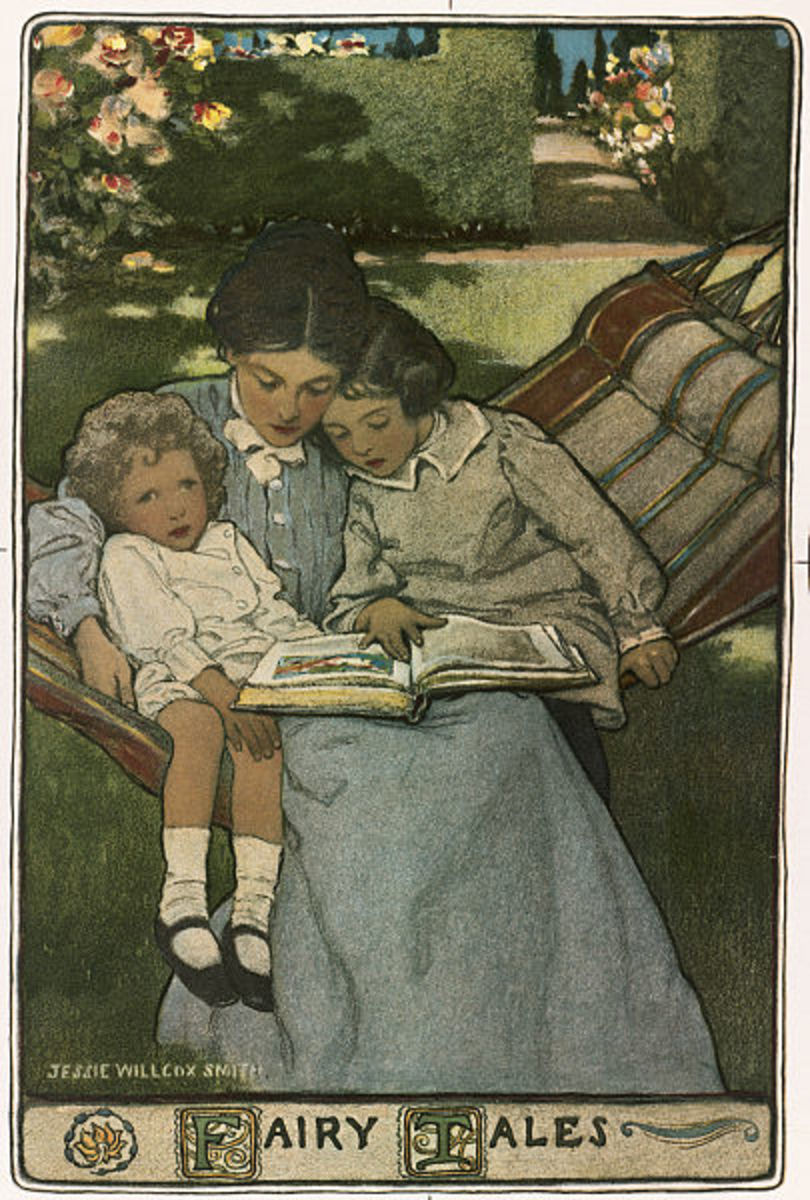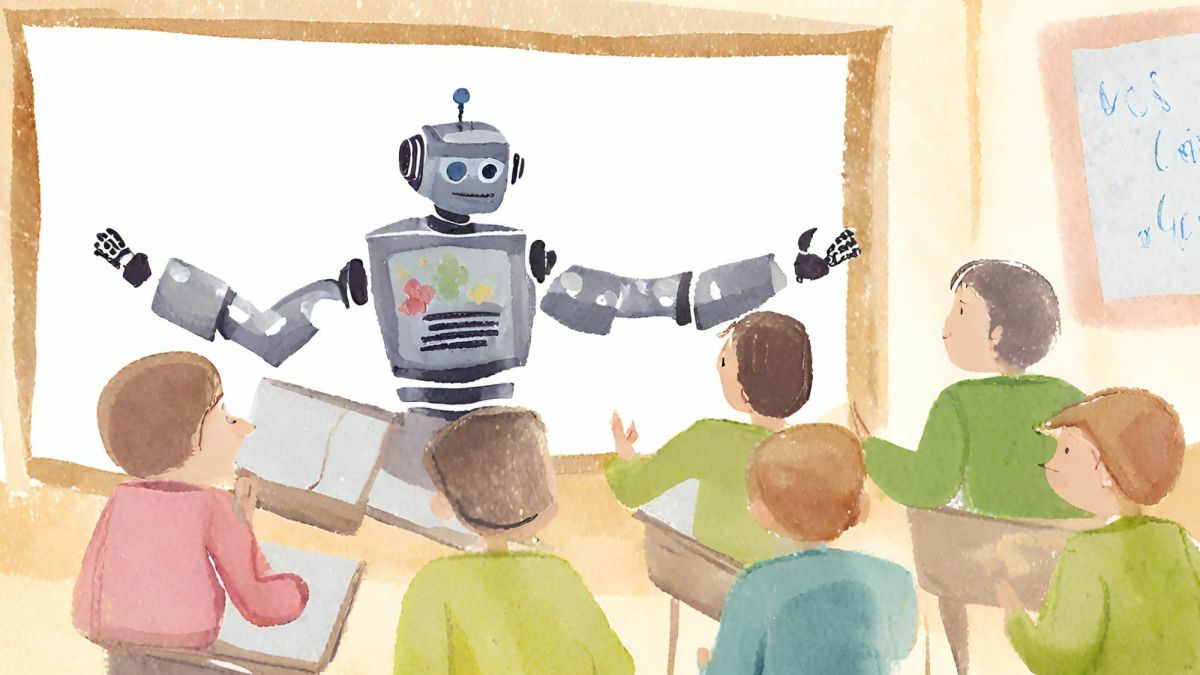An holistic, objective approach to children’s education
School
Think back to your school-days. You might have difficulty in recalling the wonder of being in a classroom while your teacher talked about various topics that, no doubt, you should have learnt about. You might recall more easily the mind-numbing boredom as your well-meaning teachers expounded their topic, valiantly trying to further your education. On the other hand, think of your time spent outside of school, wondering at all those things around you that you didn’t understand, and looking for something to get involved in.
Many of us recognise that we really start to learn when we leave school, and enter the real world. Academic studies at college to gain technical skills can - in fact, should - be very useful, yet it is on-the-job training that adds real substance to your college education.
How we learn
We learn many of our skills by doing related tasks; at first we struggle, and we examine alternative methods and find new uses for our new skills, from walking and talking to interacting with others. This approach is inbuilt, perhaps even instinctive. Many will have begun to learn to read and write in the same way.
Schoolchildren visit No 10.

Instead of school
Suppose for a moment that children spent a lot of their school-time in the kind of places and situations that grab their attention when they are outside of school. They could have opportunities to attempt all the things they would like to do, perhaps just like the grown-ups do.
School at Work
- BBC News - Teenagers taste working outside at Minsmere nature reserve
The Xbox generation get a taste of outdoor work at a project to develop the employability of pupils in rural Suffolk
A major area of adult life is the world of employment and business. This could offer opportunities to blend children's education seamlessly with preparation for adult life and work-experience. It could also offer major benefits to all concerned, as in time the children will think about careers and seek jobs, and business managers seek suitable employees.
As part of school at work the children could be challenged – as in a game, perhaps - to measure up to their tasks and responsibilities. They would likely also try to be a little more grown-up, at least for short periods. In order to meet those challenges they could be fed, and would need to assimilate, the knowledge and skills they would otherwise have learnt in school classrooms.
This approach would offer many benefits in children's education, and is far more objective and holistic than is conventional school:
- it progresses children quickly into the kind of situations that school is supposed to prepare them for.
- it overcomes the largely academic aspect of school, and offers children many challenges of the real world.
-
the children could have more opportunity to switch to some extent between their children's world and the grown-up world, meeting and learning to cope in some ways with life as an adult.
Necessary precautions in a School at Work
Naturally, a great many precautions would have to be in place against all sorts of risks and dangers. The administration for this would have to be developed, just as the Human Resources function has been in the past fifty years. Aspects that would need attention include:
- the children’s study environment. This should be safe and secure at all times. Everyone who either might have contact with the children, or can control or determine their activities or whereabouts, must be assessed for suitability and have suitable training. People with perverted inclinations or any intentions to abuse or corrupt children would have to be excluded from this scheme.
- a code of conduct for both children and workers. Extra safety notices would be needed, with particular regard to the children's presence or involvement.
- emergency plans. These would be required constantly in place against attempts to kidnap or murder children, for instance.
- close supervision and education of children regarding the importance of not causing mischief, for instance.
Educational content and standards
In Britain, the content of children's education and the targets that the children are expected to reach in their studies are specified in the National Curriculum. These specifications could broaden, however, with the increase in educational opportunities.
Effects on children's education of a School at Work
To a large extent, the children would very likely take to this new arrangement like ducks to water. They would likely be more keen to learn geography, arithmetic, trigonometry, science or craft studies in order to understand and to participate in what is going on around them. Initially at least, specialist teachers would have to be employed, whether for topics in which the organisation lacks strong expertise or simply to provide experienced teachers. The children’s learning might progress even more quickly if they were given suitable educational tasks in the organisation. They could be involved in everything from maintenance and improvement of their educational facilities to their administration, and could have management representatives.
If administered properly, this sort of scheme would nurture children’s natural urge to learn, instead of stultifying it. When they leave school, they would be more inclined to maintain an interest in further education. The overall effect might be that they would progress from being educated in a workplace from an early age to finding themselves equal in many ways to the challenges they might find there. They would more readily transfer their education from the school / workplace to the wider world around them. In due course they might even find themselves comfortable in a teaching environment in business.
Those children who do not like the scheme or are disruptive could perhaps return to conventional school.
How a School at Work scheme might work
No doubt, there would be many variations of the overall idea, with aspects ranging from:
- a) a conventional school with its own teaching staff, attached to a business, to b) a school fully integrated into a business, where many of the workforce participate in teaching, or contribute to the education of children.
- the business a) is profitable in providing its services or producing goods, to b) the business is run largely in order to provide educational facilities.
- the teachers have a) gained appropriate training at a teacher training college, to b) otherwise adopted teaching as a vocation, and have adequate and suitable experience.
- a) conventional schoolteachers accompany children on visits to the business’s factory, to b) each child routinely goes direct to their individual default location in the business premises.
- children a) attend conventional lessons, to b) follow a process that requires them to gain knowledge and skills in order to complete projects. In doing so they would likely gain other skills and experience as well. They could also receive close guidance from business or factory personnel. In this case, on-the-job training (regarding the children's studies as a job) could add another dimension to their education.
- a) children’s schoolwork is graded in a fairly straightforward way, to b) each child is regarded as a ‘pupil worker’ (doing studies only, not working for the business), and is graded by one or more mentors who follow the child’s work and achievements.
An example lesson plan at a School at Work
Several workers act as a team to teach a small group - perhaps between four and eight children. They each draw on their work experience, skills and knowledge to present the lesson.
The basis for the lesson is any process or activity that is typical in the business. An example might be to build a simple article, such as a chair or table. It could be designed from scratch, and this will involve matters such as:
- choice of materials and where they come from. This will involve learning about these materials, and the geographic region of the materials' source.
- mathematics to calculate the amount of materials needed. Some knowledge of trigonometry will likely have to be learnt.
- understanding in detail how the product will used.
- trying out similar products themselves to decide which designs are better.
- calculating the cost of the product. The costs will include materials, labour costs, factory overheads such as electricity and rent, and an allowance for profit.
The children’s craft studies would also be involved in producing the product.
This topic could contribute to:
- geography lessons, to study where the materials came from, and where that style of product might be sold.
- science, to examine exactly what the materials consist of, and the science behind that manufacturing process.
- physiological and social factors that determine some necessary design factors.
Their product could be put on sale in a shop. The children would likely have pride in their achievements in producing a good product, especially if any are bought.
Amazon - books, equipment or materials available
Bear in mind that the pupils are children
Of course, the worker-teachers should always bear in mind that they are teaching people below school-leaving age. They will be neither school-leavers, trainees, apprentices nor established employees. This factor will apply more especially to younger children.
Any risk of overwhelming the children’s enthusiasm for this scheme of education could be mitigated by being careful to limit teaching targets to those that might apply in a conventional school. Likely, the children will be able to progress beyond those targets in practical topics. Even so, the School at Work would do well to apply caution until it is clear that the children can absorb this kind of education more quickly.
On the other hand, the teachers should also be aware that some children will try to take advantage of this caring attitude. With that in mind perhaps those children that achieve more quickly could be allowed to advance more quickly than others who achieve more slowly.
Of course, the children’s early age will also be a significant factor with regard to safety issues.
The business or other type of organisation
Businesses and other organisations that take up this option would have to adapt in many ways, in order for this scheme to work. The ideal business might be one that could modify one of its divisions to accommodate children’s education at the core of its ethos and activities. No doubt, however, businesses would recognise that there could be advantages in participating in providing education:
- a profitable business operation, as the conventional school system costs the nation a lot of money.
- the current workforce could be allowed to develop alternative career skills without leaving the business.
- all employees involved could develop a vocation, instead of merely doing a job.
- the organisation’s future workforce could be ready more quickly in many ways; already work-ready, possibly with a small amount of work experience, and already introduced to the business.
- the children would probably become responsible people at an earlier age.
- income from this service could support the business when revenues from other products begin to fail.
- demand for this service would not diminish with economic downturns.
Above all, it would be necessary to plan this scheme with the children and their education in mind, from the ground up.
Conclusions
It might be useful to consider another facet of this matter. Could it be that the school-system is largely a relic of an era when children were educated by the few people with the requisite education for teaching them, and in school-buildings because the workplace was far too dangerous for children? Now that people in the workplace and in society generally have a much more enlightened attitude and a higher standard of education, perhaps children could be educated in a progression of the way in which they learned to walk and talk.
© 2010 Peter Ray









